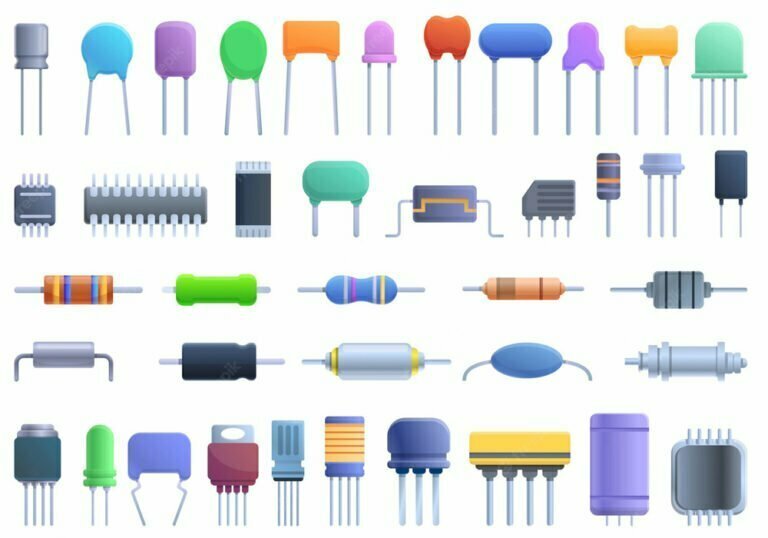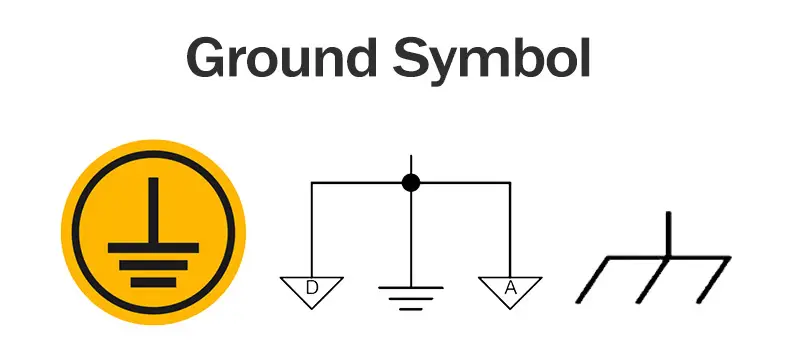A non-polarized capacitor is, as the name suggests, a capacitor that does not have polarized terminals. An ordinary capacitor will have two terminals labeled with a positive or negative sign. These terminals are used to distinguish between the two ends of the capacitor and determine which side has more charge and can be used to store an electrical charge. A non-polarized capacitor does not have these terminal markings. This makes them easier to use in many applications and makes them safer for people who might come into contact with them.
Non-polarized capacitors are also known as double-ended capacitors because they have two ends rather than one. How a non-polarized cap works are very different from an ordinary capacitor. Due to their design, they can be used in many more situations than other types of capacitors will allow. Let’s take a look at how you might use a non-polarized capacitor in your projects!
Non polarized capacitor types
As non-polarized capacitors are not polarized, they come in a wide range of types. Here are some of the most common:
- Non-Polarized Electrolytic Capacitors
A non-polarized electrolytic capacitor is the most common type of non-polarized capacitor. When an electrical current flows through the inside of an electrolytic capacitor, a chemical reaction occurs which creates an electrical field. This field acts as a charge on one side of the capacitor and is used to store the electrical power that flows through it.
- Non-Polarized Ceramic Capacitors
A ceramic capacitor is a non-polarized capacitor made from a ceramic material. Ceramic capacitors have a very long lifespan and are often used in high-reliability devices such as TVs and radio equipment.
- Double-Ended Non-Polarized Tantalum Capacitors
Tantalum capacitors are non-polarized capacitors made from tantalum. Tantalum is non-sparking and non-conductive in normal conditions, making it a safe capacitor to use in many situations.
Non polarized capacitor vs polarized capacitor
A non-polarized capacitor is a type of capacitor that doesn’t have polarized terminals. In other words, you can connect this capacitor to a circuit either way, with either end positive and the other negative.
A polarized capacitor, on the other hand, has two terminals, one of which is positive and the other negative. You must connect the capacitor so that positive is connected to positive and negative is connected to negative. A polarized capacitor is marked with a positive and negative symbol to indicate which end is which. Non-polarized capacitors don’t have these markings and can be used either way up.
How to Use a Non-Polarized Capacitor
When using a non-polarized capacitor, you will need to make sure you connect the capacitor correctly. You can do this by connecting the ends of the capacitor to + and – terminals. If you want to store charge in the capacitor, you should connect it so that the positive end of the capacitor is connected to the positive terminal and the negative end is connected to the negative terminal.
If you want to discharge the capacitor, you can connect the capacitor so that the negative end is connected to the positive terminal and the positive end is connected to the negative terminal. Non-polarized capacitors are ideal for situations where you need to lower the voltage in a circuit. They can also be used to smooth out fluctuations in a circuit or to keep a circuit running for longer.
Non polarized capacitor application
Non polarized capacitors are used in circuits as a voltage divider, to filter out noise, to smooth out a circuit, to increase a circuit’s current, to increase a circuit’s voltage, to reduce a circuit’s current, to act as a short circuit, and more. Capacitors are often used to filter out noise. Noise is often caused by electrical fluctuations such as those in power lines. A capacitor can be used to filter out this noise as it will store this electrical energy and discharge it slowly.
Non polarized capacitors can also be used to smooth out a circuit. This is often done when a circuit has a lot of variation, such as when it has a motor or is connected to the power grid. This capacitor works to even out the circuit and make it more consistent. You can also increase a circuit’s current by using a capacitor in the circuit. This capacitor works to store energy and then release it when the circuit requires it.
Non polarized capacitors can also be used to increase a circuit’s voltage. This is often done with power supplies. The capacitor is used to store energy and release it when there is a dip in the power supply’s current. You can also reduce a circuit’s current by using a capacitor in the circuit. This capacitor works to store extra electricity and discharge it slowly when the current is high.
You can also use a capacitor to act as a short circuit. In some circuits, it is necessary to create a short circuit. This is often done in circuits that use motors and other mechanical equipment. A capacitor is often used to create this short circuit.
Summing up
Nonpolarized capacitors are used in a wide range of applications. They are often used to lower the voltage in a circuit, smooth out a circuit, or increase a circuit’s current. They can also be used to act as a short circuit, filter out noise, or increase a circuit’s voltage. A non polarized capacitor does not have a positive and negative end like a polarized capacitor does. This makes them easier to use in many applications and makes them safer for people who might come into contact with them.






